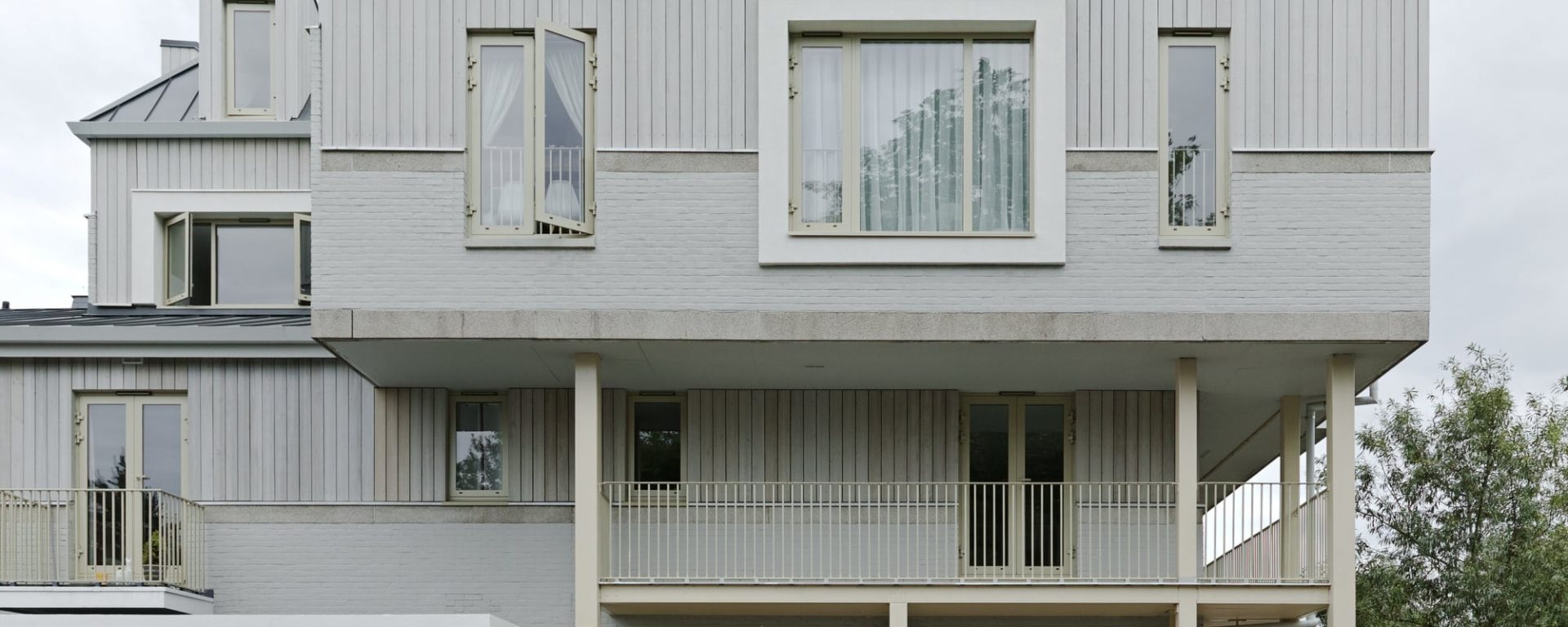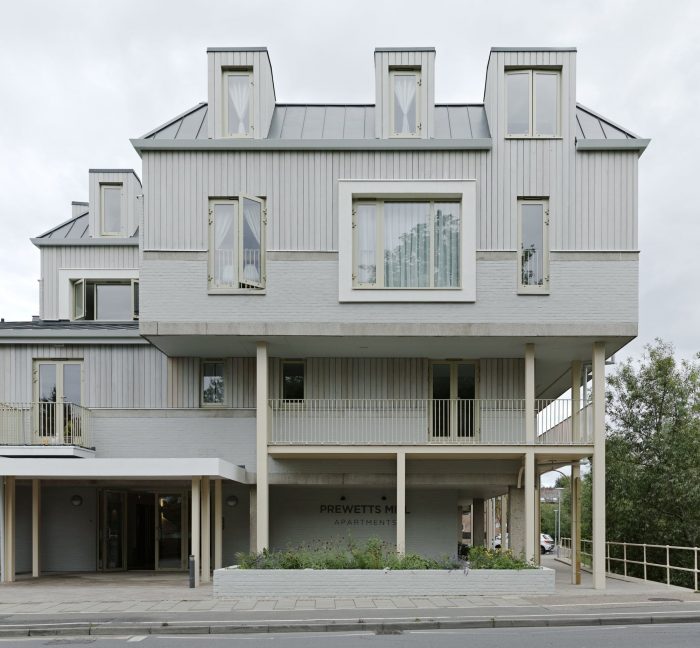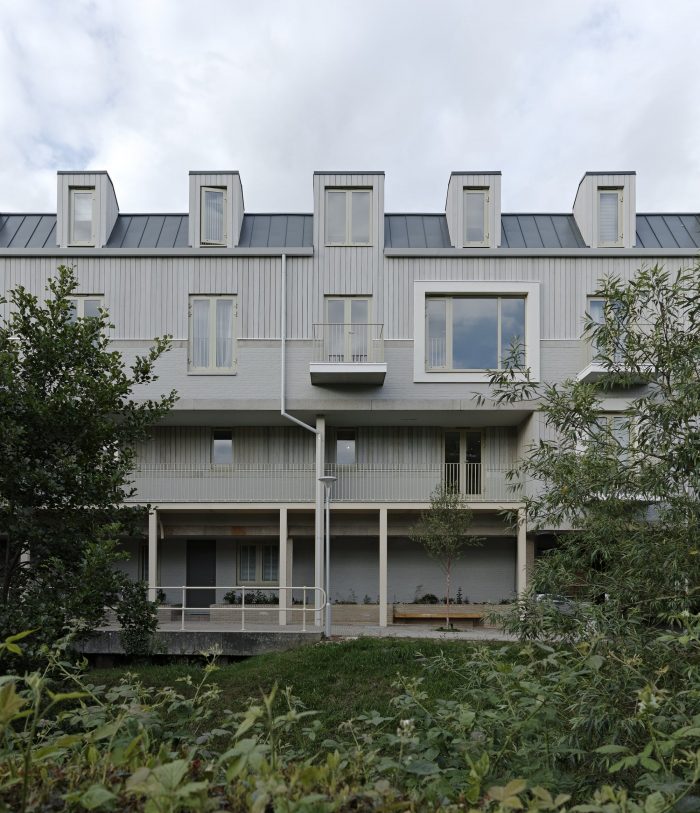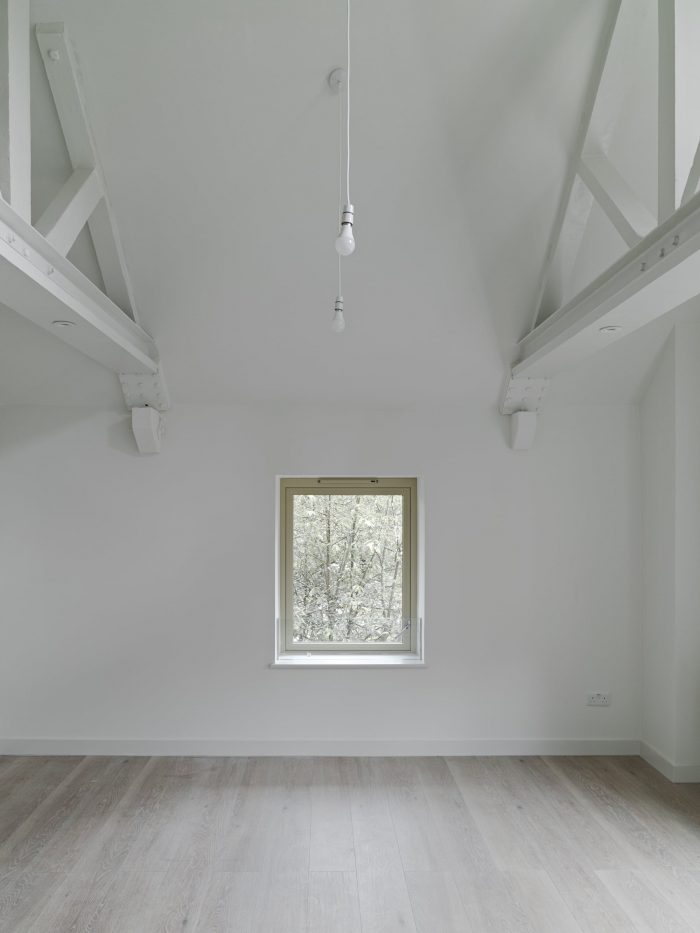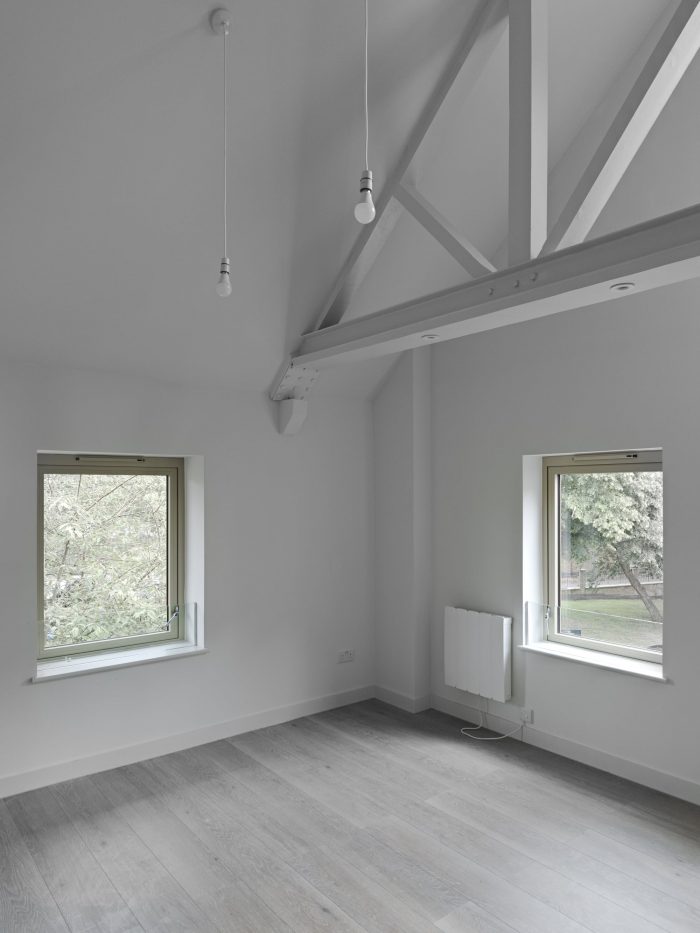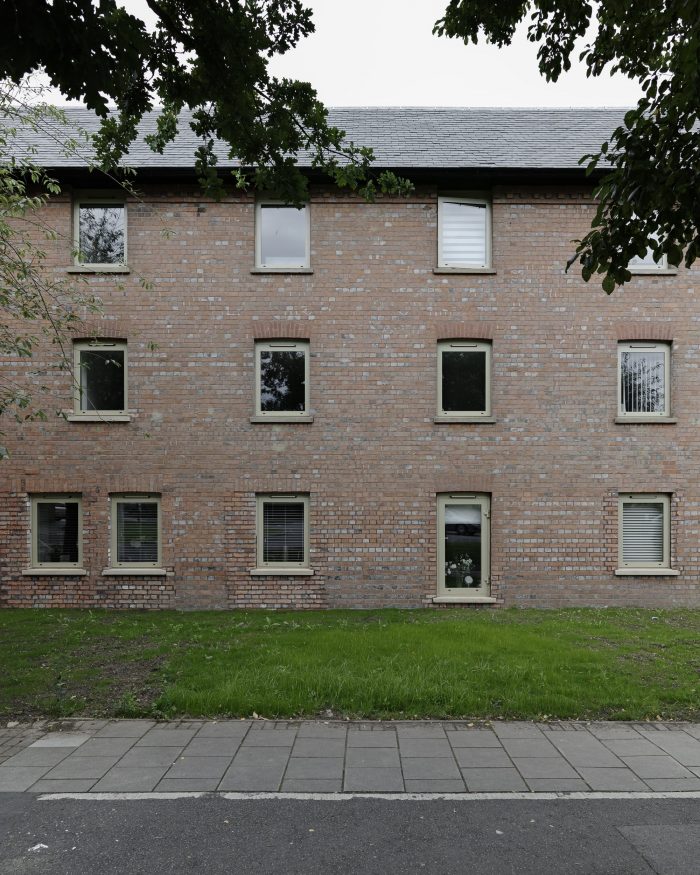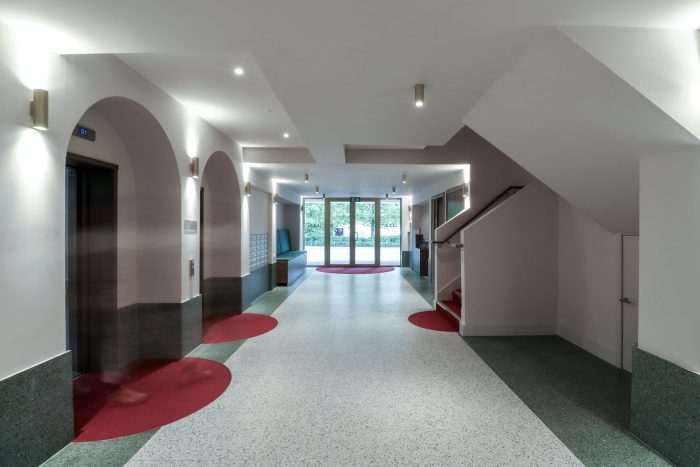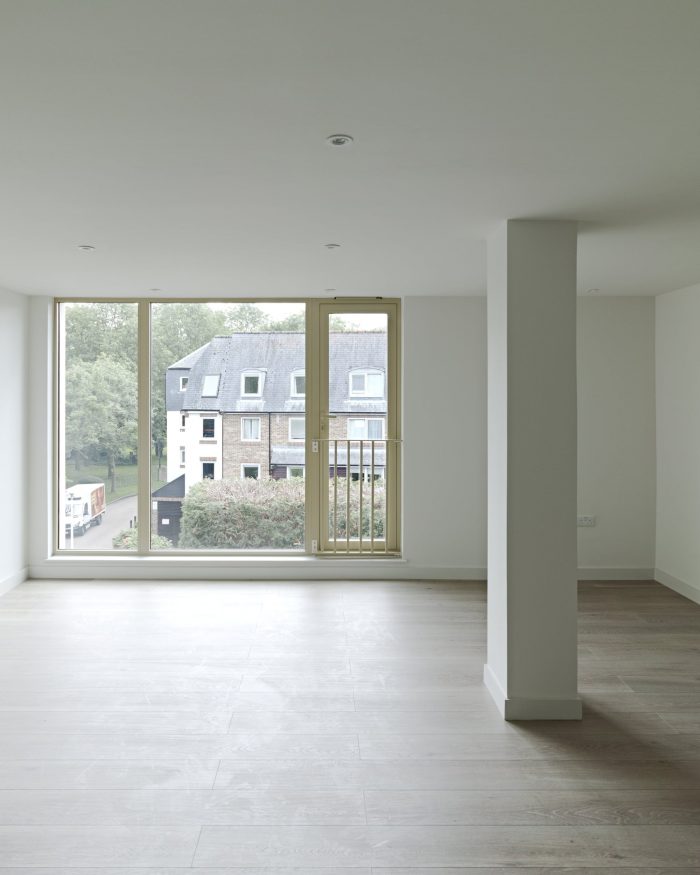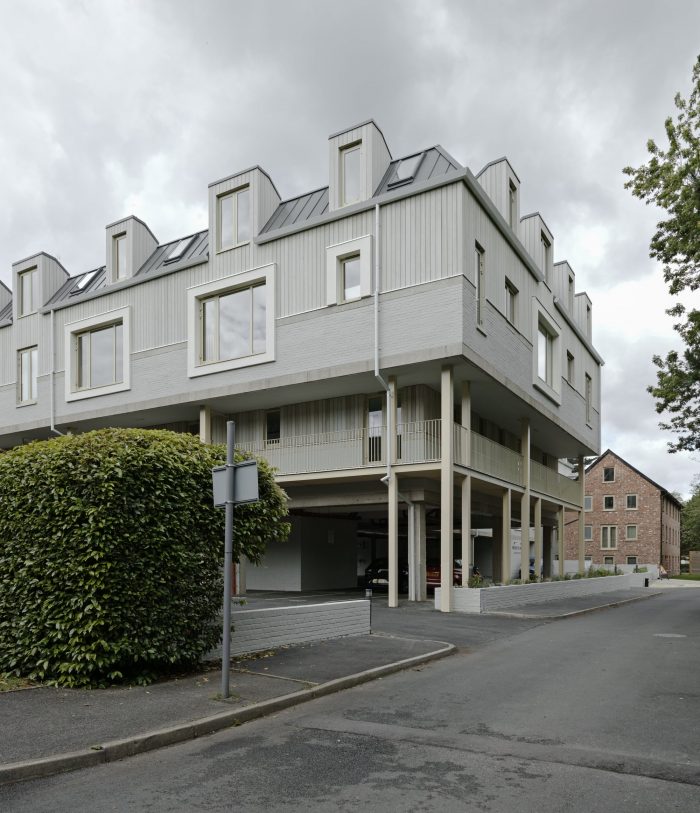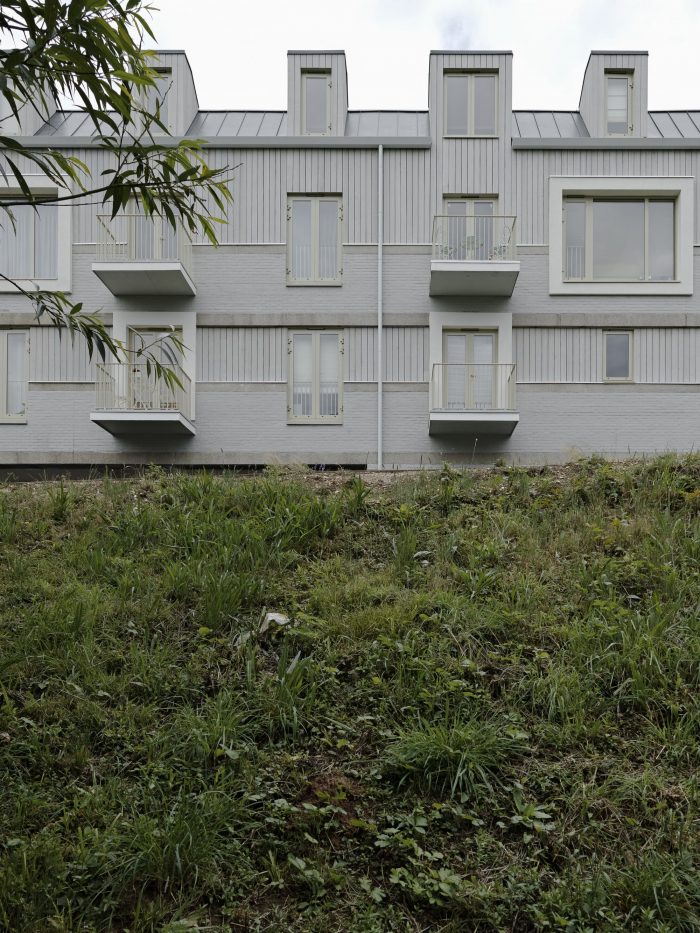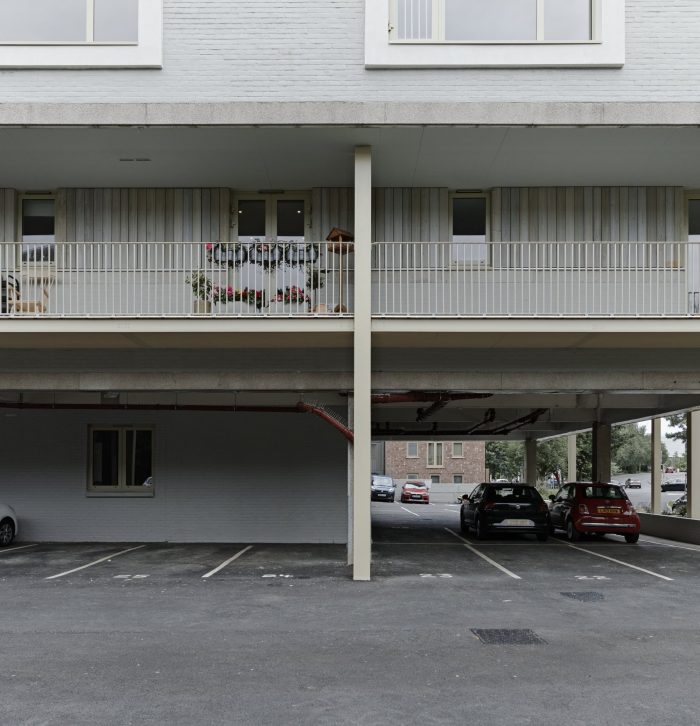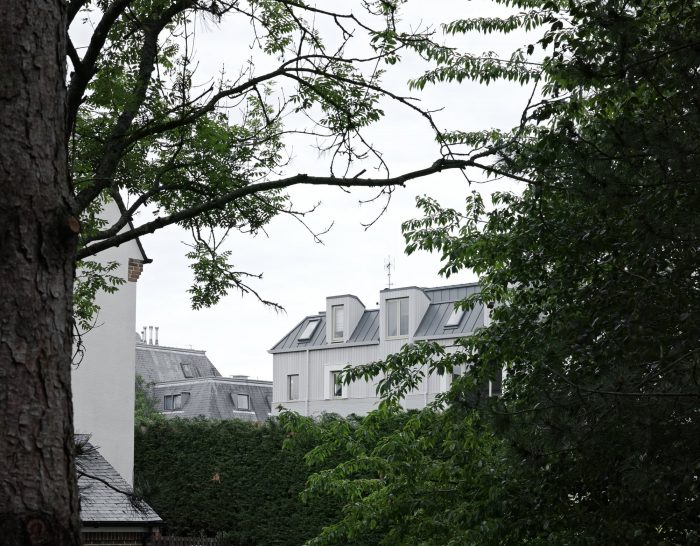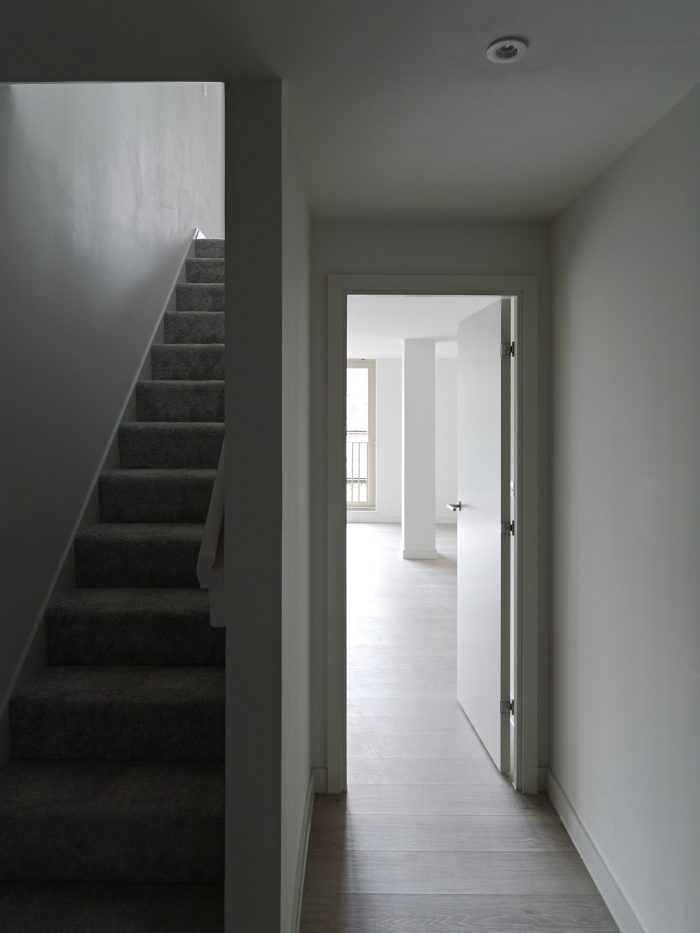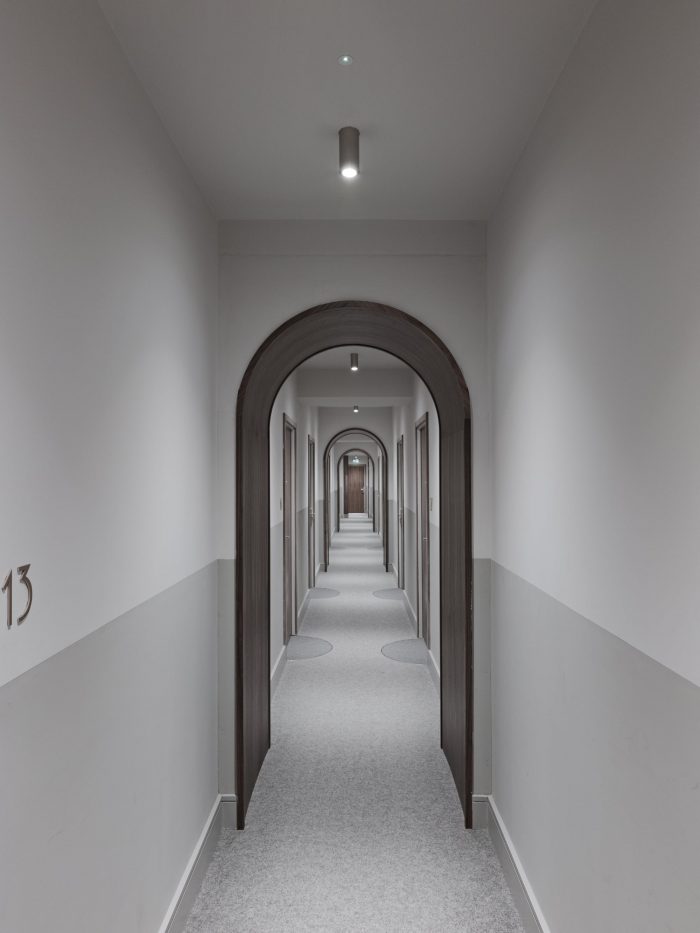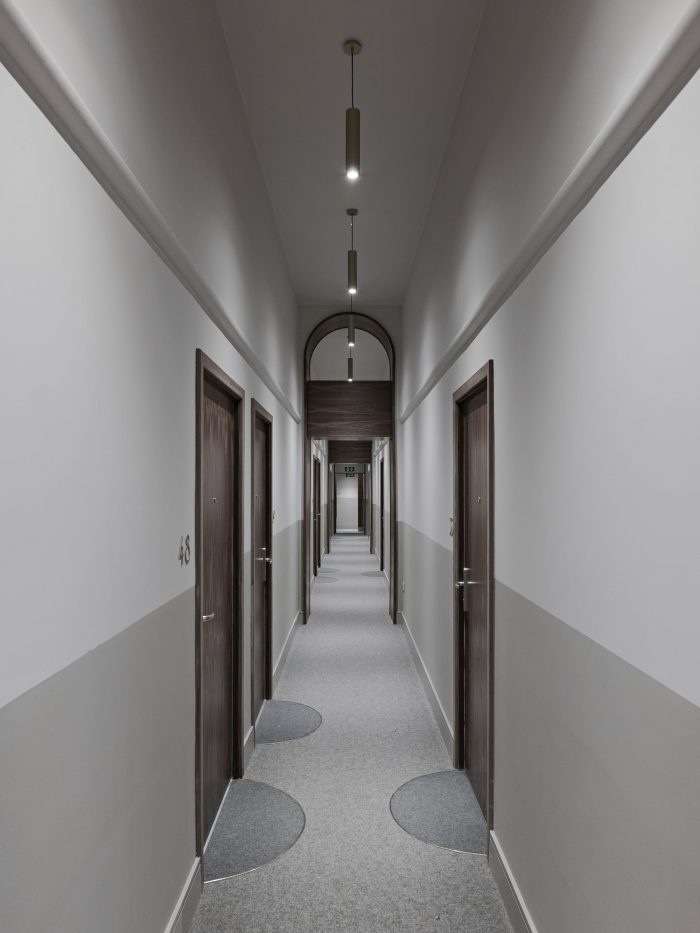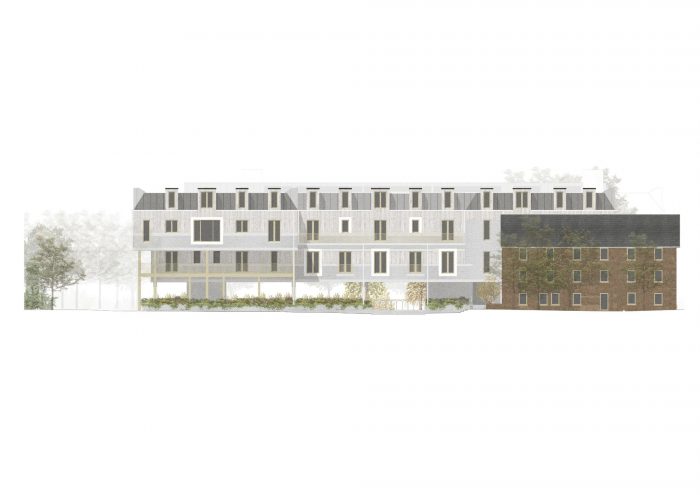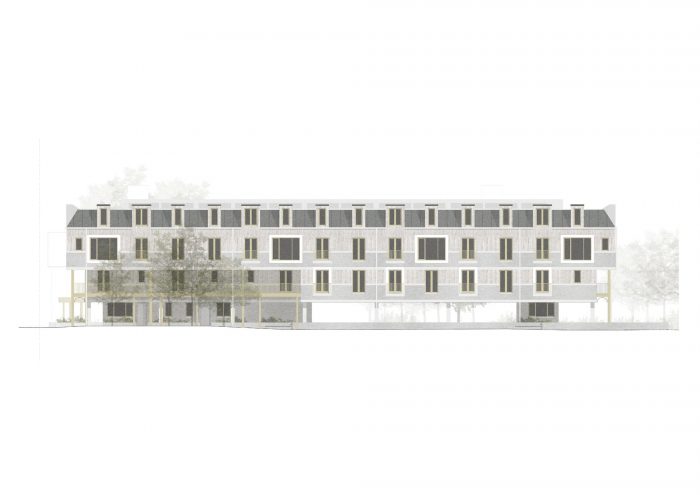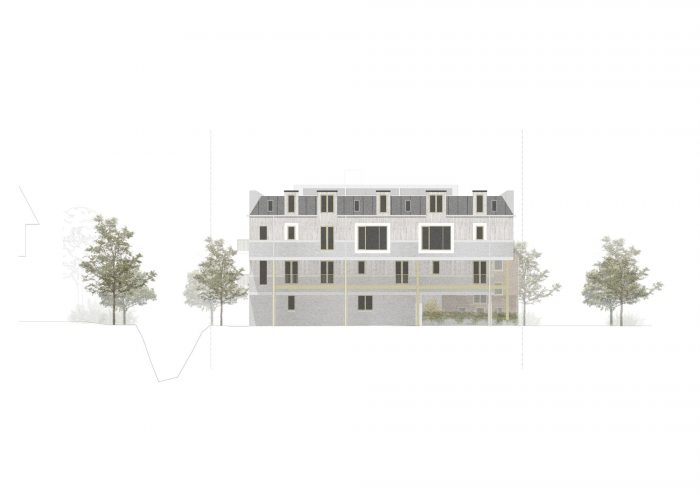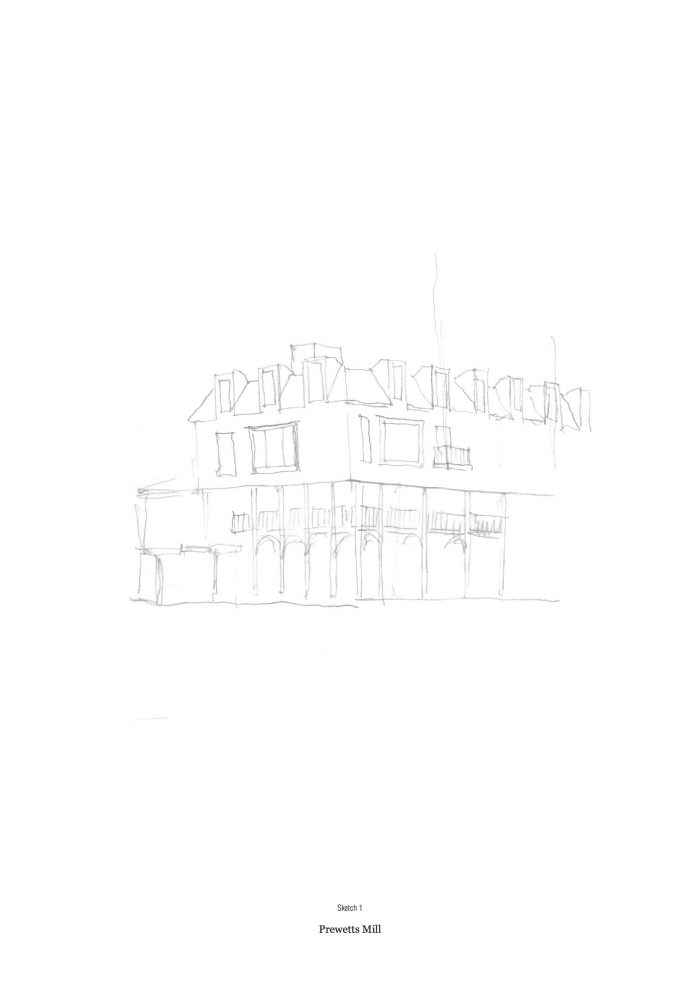在探索什么是赋予结构新的用途方面,t-sa已经完成了西萨塞克斯郡霍舍姆的一个外墙和公共空间项目。客户要求为一个老面粉厂和办公大楼重新规划未来,以创造59套新公寓。该项目是通过邀请竞争获得的,任务是为改建项目设计一个立面,并通过经济设计和对公共和共享空间的仔细考虑来加强该场地。
Exploring what it is to give structures a new purpose, t-sa have completed a façade and common space project in Horsham, West Sussex. The client asked for a reimagined future for an old flour mill and office building set to create 59 new apartments. Awarded by invited competition, the commission was to design a façade for the conversion and to enhance the site through economic design and careful consideration of the public and shared spaces.
该地块从南面的阿伦河上接近,北面从镇中心的较高有利位置接近。场地的能见度和识别度随季节变化,远处的屋顶可以透过树木瞥见它。工厂自豪地坐落在一个繁忙的十字路口,周围是零售业。毗邻的办公大楼,其气势恢宏的水平板和带状玻璃,与主机厂不相称。
The site is approached from the south over the River Arun and the north from the higher vantage point of the town center. The site’s visibility and recognition change seasonally, and distant glimpses of its roofs are caught through trees. The mill sits proudly on a busy intersection with retail surroundings. The office building adjoined, with its imposing horizontal slabs and band glazing, sat at odds with the host mill.
作为一个集镇,霍舍姆镇中心的特点是陡峭的屋顶和雨棚(卡法克斯,集市广场)以及17、18、19世纪的伦敦式平面街道的住房。附近地区以前是有许多磨坊的工业区或被工匠小屋占据,现在主要是办公室、大型零售场所和混合用途的发展。为了在城市景观中重建这些结构,我们采用了一种垂直的节奏,用一种正式的开口和材料组成,打破了压倒性的水平性和与开放式功能的联系。
A market town, Horsham town center is characterized by the steep roofs and dormers (the Carfax, market square) and the London plane-lined streets of 17th, 18th, and 19th-century housing. Nearby areas that were formerly industrious with numerous mills or occupied by artisan cottages are now predominantly offices, large retail premises, and mixed-use developments. To re-establish the structures in the townscape, a vertical rhythm was applied with a formal composition of openings and materiality, fracturing the overwhelming horizontality and association to the open plan function.
通过插入一定数量的窗户比例和立面细节,灌输了一种新的严谨性。新的立面和屋顶景观语言体现了住宅的目的,唤起了显著的地方特色,并同时表达了比例和秩序的通用语言。采用了一种微妙而柔和的颜色和材料调色板。通过给现有的砖块上色,暴露出混凝土带,引入落叶松包层,以及平面之间的微妙浮雕,强调了触觉的简化。
A new rigor was instilled by inserting a set number of window proportions and facade details. The new language of the façade and roof-scape characterizes the residential purpose, evokes notable local characteristics, and speaks simultaneously to a universal language of proportion and order. A subtle and muted color and material palette are employed. Tactility is emphasized through simplification by painting the existing brick, exposing the concrete banding, introducing larch cladding, and subtle relief between planes.
通过拆除20世纪80年代的结构玻璃和恢复适度的窗户比例,恢复了老面粉厂外墙的完整性。预处理过的木材包层填充了大型玻璃带,参考了当地复杂的细节设计。打破悬臂的主导地位,环绕式阳台、朱丽叶阳台、明示的雨水管道和较大窗户周围的渲染细节带来了触觉上的敏感度–将这座建筑与它的过去和未来联系起来。
The integrity of the old flour mill façade is restored by removing the 1980s structural glazing and reinstating modest window proportions. Pre-treated timber cladding infills the large glazing bands, referencing intricate local detailing. Breaking the dominance of the cantilevers, wrap-around balconies, Juliet balconies, expressed rainwater pipes, and render details around larger windows bring tactile sensitivities – relating this building to its past and future.
t-sa还被要求设计公共区域,即连接公共领域和家庭私人领域的空间。通常被忽视的是,客户希望为这些介于两者之间的空间提供独特的设计,在大厅、楼梯、走廊和连接的人行道上表现出同样的慷慨精神。对水磨石瓷砖和胡桃木细木工的精心使用唤起了人们的温暖和优雅。
t-sa were also asked to design the common areas, the spaces connecting the public realm with the private domain of the home. Often neglected, the client sought a distinctive design for these in-between spaces, showing the same spirit of generosity to the lobbies, staircases, corridors, and connecting walkways. t-sa continued the language of verticality, rhythm, and tactility to these spaces. The careful use of terrazzo tile and walnut joinery evokes warmth and elegance.
地面景观标志着旅程、门槛和过渡空间,以及对个人和社区的同时认识。霍舍姆的许多开放空间和步行路线都有暂停的地方,可以坐下来,欣赏周围的环境。同样的精神通过种植、座椅和照明来丰富普雷维茨磨坊的公共领域,这些都缓冲了场地与阿伦河和周围街道的边缘。
A floor-scape marks journeys, thresholds, and transition spaces and an awareness of the individual and the communal simultaneously. Horsham’s many open spaces and pedestrian routes have places to pause, sit and take in the environs. The same spirit was carried through to enrich the public realm of Prewetts Mill through planting, seating, and lighting, which buffer the site’s edges with the River Arun and the surrounding streets.
Architects: Takero Shimazaki Architects
Year : 2019
Photographs :Anton Gorlenko, Paolo Emilio Pisano
Country:UNITED KINGDOM

